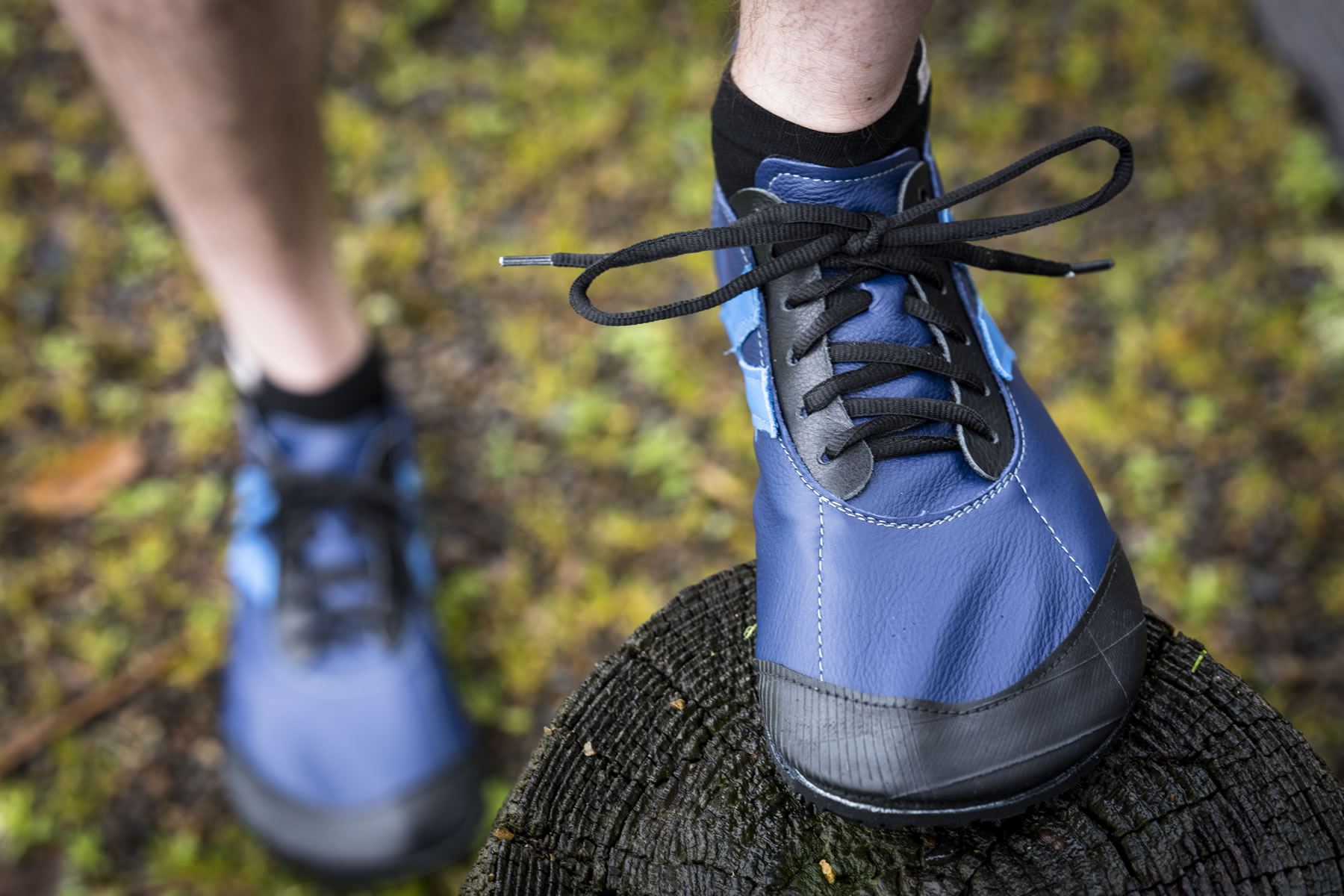Foot strike pattern (i.e. heel strike vs forefoot strike) is everything in running. If you heel strike, you will not only end up with shin splints, but a possible shin facture because for one, the foot is forced to pronate more, which means the heel moves in extreme positions during the landing and stance phases of running. For another, at heel strike the shin angulates too horizontally away from the center mass (torso), shown below, which dramatically increases the margins of impact intensity and duration, which are the normal accompaniments of heel strike running, but not in forefoot running:
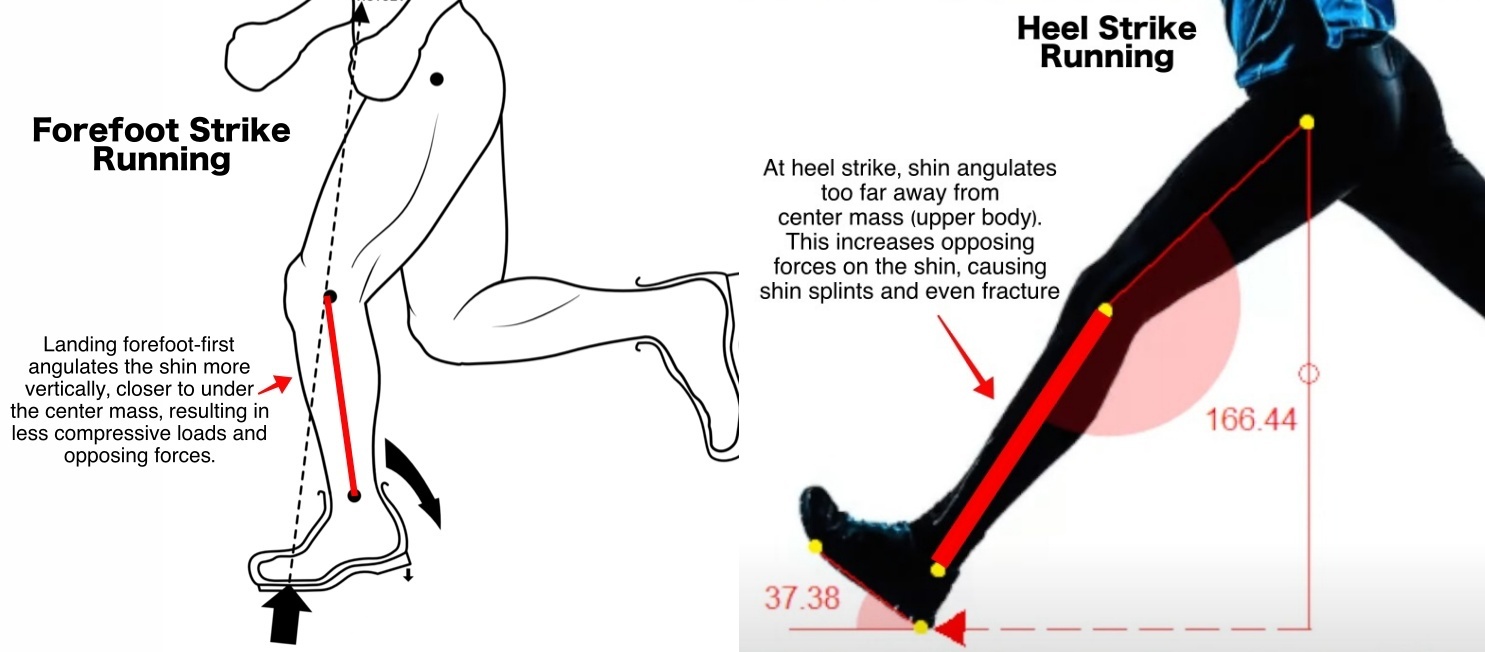
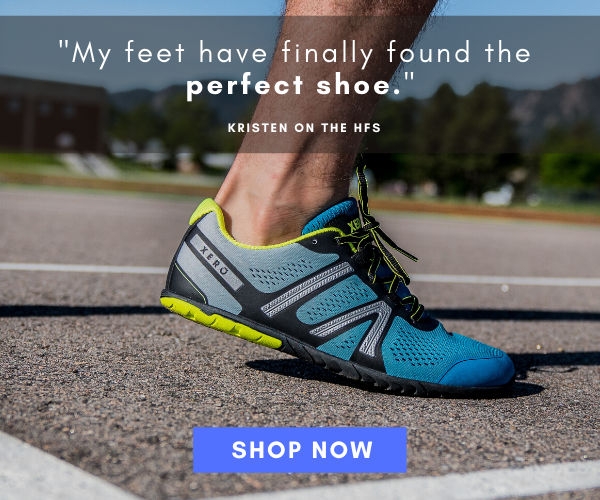
In running, forefoot striking, if used properly, is very effective for injury prevention, especially preventing shin injury. A proper forefoot strike involves landing on the outer-side of your forefoot first, making initial ground-contact just under the 4th and 5th toes (see here exactly what a proper forefoot strike looks like). Conversely, if you land improperly on your forefoot, such as landing directly on the middle of your forefoot or high up on your toes, puts the shin under unwanted pressure.
A study by Willems et al. in the journal Medicine and Science in Sports and Exercise found that runners suffering from lower leg injury had higher pressure in the middle of the forefoot (medial forefoot) and less peak pressure under the 5th metatarsal head (outer-side of the forefoot- shown below) as compared with uninjured runners.
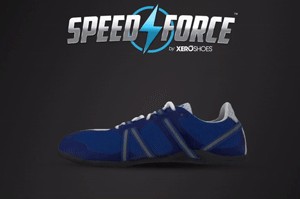
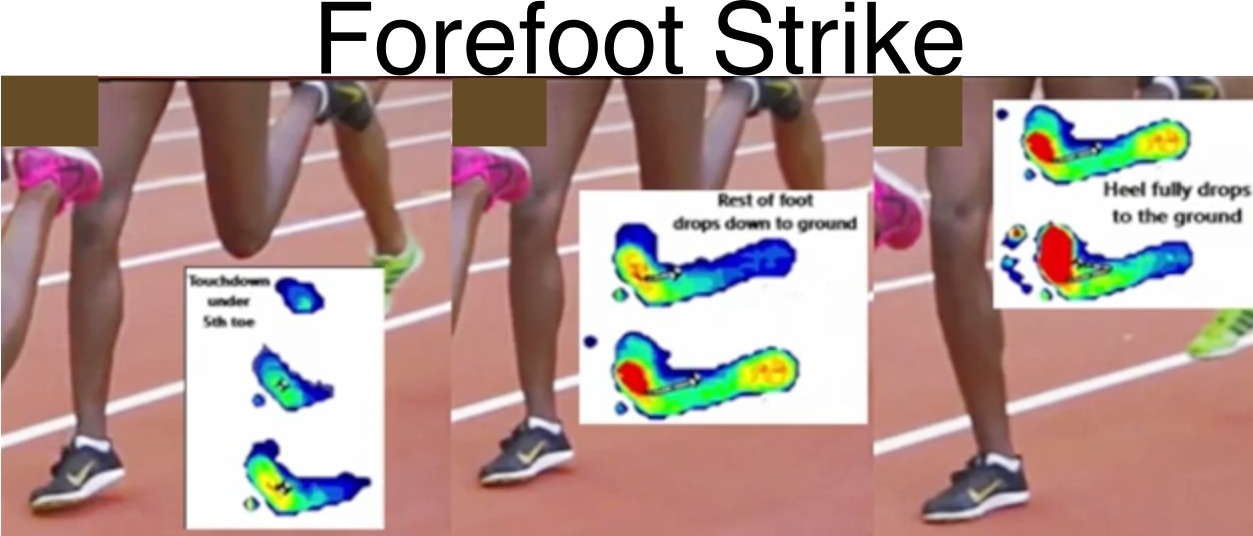
One explanation for the link between high pressure on the middle of the forefoot at landing and shin splints in running is that landing on the middle of the forefoot causes the back of the foot (the heel) to shift into extreme, over-straining positions (over-pronation) which leads to excessive torsion stress on the inner shin bone. Simply put, landing on the middle of your forefoot causes the heel to shift too far out of tolerance, causing too much bending and twisting motions to the area of which all this bending and twisting are transferred from the heel to the shin.

- The researchers found that the increased medial forefoot pressure was accompanied with excessive pronation (heel shifted into over-straining positions), which leads to excessive eccentric traction to the plantar flexors (a group of foot muscles that physically link up to the medial and posterior shin). Over time, this excessive traction leads to inflammation and pain (Beck et al. 1994;Micheal et al.).
Although, in running, some pronation (when kept in a safe range) is very necessary because its the body’s natural defense mechanism for deflecting and minimizing bone stress (Hamill et al. 1992;McClay and Manal, 1992). To ensure pronation stays in a safe range when running, landing on the outer-side of your forefoot is the necessary correction that sharply limits pronation, thereby reliably preventing the mechanical burdens that cause shin splints.
The Take Home Message
So much of the impact-protective benefits of forefoot running comes from making initial ground-contact towards the outer-edge of the forefoot, and not on the middle of the forefoot.
Landing in the middle of your forefoot or even landing heel-first when running hinders the efficient use of proper pronation by causing the back of the foot to pronate too much to injury predisposing levels, whereas the evidence is overwhelming in support of landing towards the outer-side of your forefoot as key in maintaining stable pronatory control that perfectly prevents increases in impacts from spreading out onto the shins.

If you’ve enjoy my post, you’ll love my YouTube channel, here, where I show why forefoot running works and heel strike running hurts!
References:
BECK , B. R., L. R. OSTERNIG , and E. OREGON . Medial tibial stress syndrome: the location of muscles in the leg in relation to symptoms. J. Bone Joint Surg. 76AV1057–1061, 1994.
HAMILL , J., B. T. BATES , and K. G. HOLT . Timing of lower extremity joint actions during treadmill running. Med. Sci. Sports Exerc. 24:807–813, 1992.
MCCLAY , I., and K. MANAL . Coupling parameters in runners with normal and excessive pronation. J. Appl. Biomech. 13:109–124, 1997.
MICHAEL , R. H., and L. E. HOLDER . The soleus syndrome. A cause of medial tibial stress (shin splints). Am. J. Sports Med. 13:87–94, 1985.
Willems at el. Gait-Related Risk Factors for Exercise-Related Lower-Leg Pain during Shod Running. Med Sci Sports Exerc, 2007; 39(2): 330-339.
If you’d like, you can support Run Forefoot and help keep it going by making a donation in any amount of your choosing:
Or, you can support Run Forefoot by shopping at the BEST Barefoot Shoe Brands, and be sure to bookmark these links 🙂
Lonowear: https://lonowear.com/?ref=cedsholh
Saguaro: https://www.saguaro.com/?ref=9bVA8fEkmDvB-I
Vibram FiveFingers: https://amzn.to/3VQLAUI
Vivobarefoot: https://amzn.to/3vycQOY
Be Lenka: https://www.tkqlhce.com/click-7600968-13947200
Xero Shoes: https://xeroshoes.com/go/Run_Forefoot
Iguaneye: https://www.iguaneye.com/?ref=8tfXVc92
Soft Star Shoes: https://shrsl.com/3mp1b
Wilding Shoes: https://bit.ly/3lIygQP


